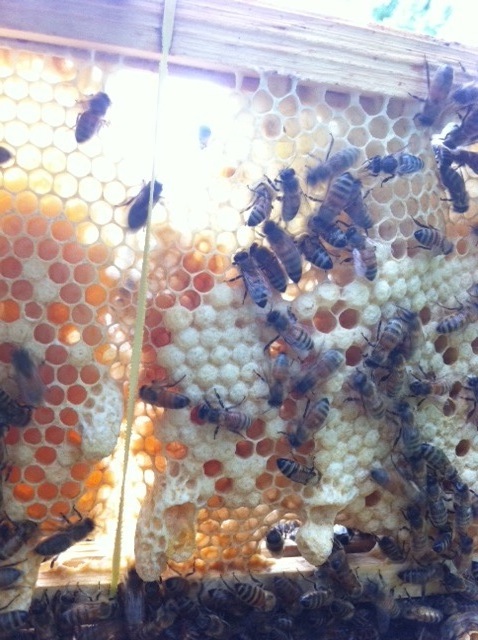Reader, I think I’m on to something around here.
Let me tell you what’s been brewing and what I’m doing about it.
As you probably already know, the honeybees are having a rough go of it these past years. People ask me everyday what factors I believe have continued to cause the overall decline of the honeybees—and I have my ideas, though I’ll share those with you in another post.
As a result of the honeybee decline, many of our managed Ohio hives died this past winter…I lost a high high high percentage of my hives. And when it comes time to replace those lost hives, lots of people purchase 3-pound packages of bees and a queen. These packages arrive in Ohio mid April from southern states…states that, because of their more temperate winter weather, can get a good jump on building their hives and queens for shipment earlier in the season. If we in the Midwest or in the North receive our bees from southern states, we can get our new hives established more quickly.
I’ve ordered many packages of bees these past few years…both for myself and for others who then purchase these bees from me. And I’m very grateful to our southern beekeepers who have continued to supply us.
However (and I am not complaining here), it would take a numbskull not to notice that these packaged bees and the queens that arrive with them limp along for a long time once we hive them. The queens often fail completely and immediately. Either the hive goes queenless or the colony very quickly supercedes the queen. So the hive either fails completely or it crawls along, using resources from our other hives in order to develop its new queen, and then waiting a month or so for that new queen to emerge, mate, and begin laying. Very few of these hives develop with the vigor we expect from a happy, healthy, robust colony. Honeybees are generally enthusiastic, friends…they don’t naturally drag around.
And then, after nurturing a slow, weak hive all season, the colony often simply gives up the ghost over the winter…which is all very frustrating and expensive. So what do we do? We then order another package the following spring. To me, this cycle feels more and more as if I’m chasing good money after bad. Over and over and over again.
This spring, more of my packages failed than ever. And I’ve decided not to climb back on that treadmill.
Fortunately, it’s tough to dampen hope. So rather than give it all up, I’ve become resourceful. This season, I’ve begun to rear my very own queens.
I’m convinced, Reader, that we Ohio beekeepers can rear our own healthy queens…proven queens from genetics that have already survived our Midwest winters…queens that can rear worker bees genetically adapted to forage midwestern flora. And if I rear my own queens, I will not churn them out for massive shipments…which means I can give the hives the resources necessary to rear strong and healthy queens. It’s all in the resources, folks…rearing queens requires strong bees, honey, and pollen…and a knowledgable beekeeper who is doggedly determined to run a sustainable operation. And that beekeeper happens to be me.


